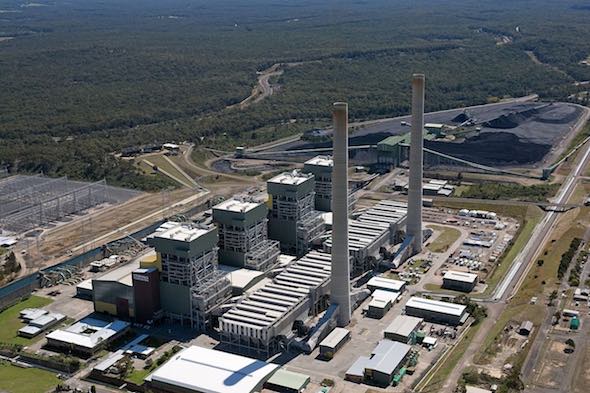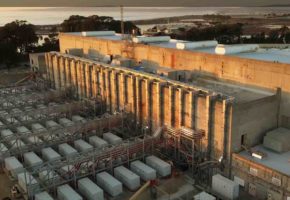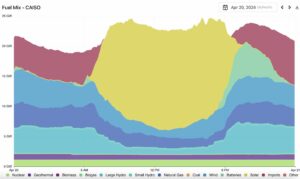New South Wales may well have the biggest fleet of coal generators in the country – even after the closure of the ageing Liddell coal generator in April – but it may be about to stun the energy world with a new, unexpected record for renewables.
On Thursday this week, the share of renewables in NSW leaped to a stunning new high of 87.5 per cent of state demand – albeit for a 5-minute period at 11.20am (AEST) – as the share of renewables in the country’s main grid also hit a new peak of 70.8 per cent around about the same time (actually 11.40 AEST)
The NSW record is a remarkably big leap up from its previous peak of 78.8 per cent set just two weeks , according to data from GPE NEMLog 2, and mostly came from wind and solar, which provided 77.5 per cent of state demand, also a record.
Tasmania and South Australia are well used to generating more than enough renewables to meet state demand – it happens on almost a daily basis and the excess is exported – but the new peak in NSW thrusts the state above its coal-state rivals Victoria and Queensland.
GPE’s Geoff Eldgridge notes that Victoria – which has an official target of 95 per cent renewables (averaged over the year) by 2035 – has reached a peak of 85 per cent renewables, and Queensland, which has a target of 85 per cent renewables by 2035) has reached a peak of 70.9 per cent.

Eldridge wondered which coal state might get to an instance of 100 per cent renewables first – whoever does so is likely to be exporting excess power to neighbouring states, so it doesn’t necessarily mean that there will be no fossil fuel generation at all at the time.
“We can see, in the graph below, the trajectories of NSW, Queensland and Victoria RE share maximums since March 2018 when AEMO made Regional Rooftop PV outputs public,” he wrote on a LinkedIn post.
“Today’s maximum in NSW, gives it the lead amongst these three states. Which one will be first to reach 100% RE Share, joining South Australia and Tasmania?”

One reason why NSW might be enjoying a greater share of renewables than its near neighbours is that its wholesale prices are generally higher than other states.
In September, for instance, it accounted for 14 of the top 20 solar farms for the month because few were obliged to switch off due to negative pricing events. Average daytime wholesale prices in all the other states for the month were negative, mostly due to the increasing penetration of rooftop solar.
The growing share of renewables presents an interesting dilemma for the market operator, and the NSW government, which has been urged to negotiate with Origin Energy over extending the planned closure date of the 2.88GW Eraring coal generator, the country’s largest which is current scheduled to shut down in August, 2025.
One of the reason Eraring and other coal generators do want to exit the grid is because of the difficulties they have ramping up and down to cope with the growing influence of rooftop solar, and large scale renewables.
Coal generators have been used to bidding negative prices in the middle of the night because of the lack of demand at that time, but have struggle since rooftop solar began eating their daytime lunch, sending grid demand in the middle of the day to ever decreasing lows.










